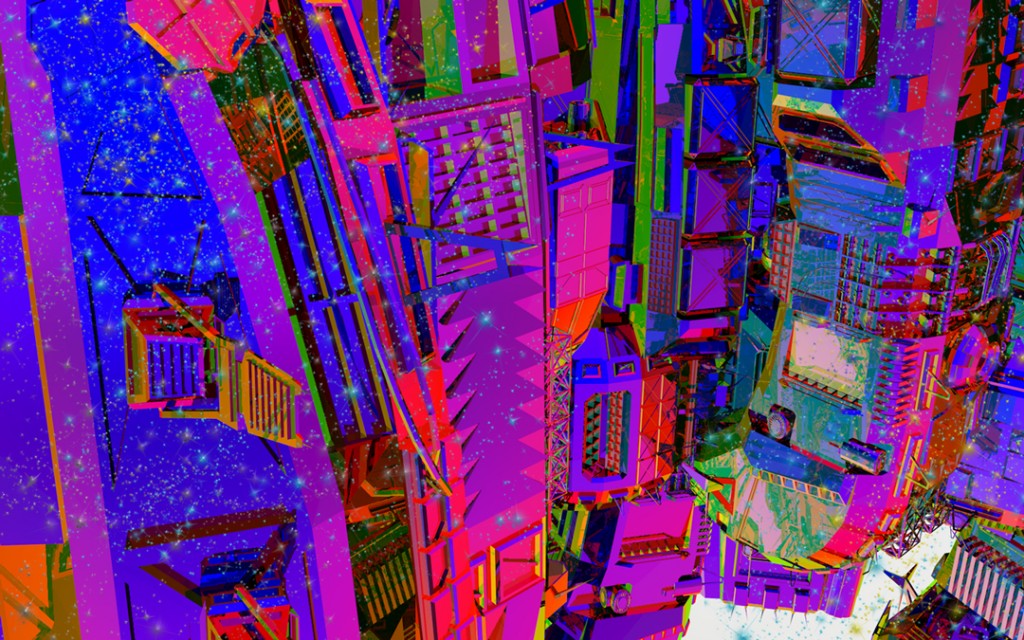photo by Matthew Leifheit for CCNY
1989 New York, NY
I officially consider Deanna Havas to be my muse. She has a certain “I don’t give a fuck” that combined with very real knowledge and a staggeringly evolved and cohesive personal aesthetic frequently leads to good art. She is constantly at work, and the things she makes are things you’d like to have around because they exude the same kind of shameless and pokingly subversive wit. A notable entity on the internet, Havas offers her very real self as a mirror of pixels and tweets. Working with the world wide web she injects the usually cold arteries through which our digital lives flow with uniquely human insight and warmth.
This month New Museum affiliated non-profit Rhizome presents a new piece by Havas entitled “Affiliate Program” as part of their “The Download” series. The program allows you to earn back the membership fee you pay to Rhizome by directing traffic to her website.
“The Download as a curatorial program makes it so you can only download the monthly projects if you join, and the profits are essentially split between the artists at the end of the program,” Havas explains. “This stood out to me as a pretty unique feature of this curatorial project so I was interested in engaging with that aspect. Alternative economies are often proposed as a solutions for commodifying net based works which continues to be an ongoing theme, and affiliate marketing occurred to me, not only because its kinda sketchy, but because its unique in the sense that its an economic system indigenous to the internet.”
Found Abstract Render, 2012
Iphone/Ipad composition, 2012
Iphone/Ipad composition, 2012
Havas sometimes culls things from the internet, sometimes creates things in exhaustively painstaking detail from scratch, and often mixes both. Everything she creates is unified by very informed engagement with culture in general alongside very specific subcultures. In her recent piece “Mecha Composition” Havas summons a digital golem of cyber detritus to champion the obsessions of nerds everywhere.
Mecha Composition, 2013
“Mecha Composition also fits in with this otaku/loner/ ‘content creation as escapism’ them that I’m interested in lately. Otaku is a somewhat pejorative loanwoard from Japanese basically describing basement dwellers who are obsessed with anime, video games , etc. In Japan the existence of this subculture incited a moral panic (due to a serial killer who was allegedly otaku), which seems somewhat absurd- the idea that someone who is afraid to leave their home possess a threat to society. Hikkomori is the Japanese word describing a ‘phenomenon of reclusive adolescents or young adults who withdraw from social life, often seeking extreme degrees of isolation and confinement.’ The causes of this phenomenon have been attributed to mental/developmental disorders such as autism, peer bullying and the demands of the education system in Japan. They encompass a larger group of ‘freeters’ (expression for people between the ages of 15 and 34 who lack full-time employment or are unemployed, excluding housewives and students) that grew out of economic conditions in post-war japan- a highly competitive and unstable job market. I believe that the socio-economic climate that allowed for this sub-culture to grow is somewhat analogous to the socio-economic conditions we experience in (post-Bush administration) America today. Mecha is a sci-fi genere of robots and mechanical objects, its pretty common in anime/magna, Gundam is a popular example. It has a strong conceptual/ aesthetic link with otaku culture (/m/ on 4chan is a mecha forum). I downloaded various mecha 3d models from the internet and designed my own shaders for them, in an attempt to engage with this ‘collective aesthetic’. I like the idea of these robots, not only in the escapist/hobbyist sense, but also as a representation of power in a meek culture.”
Havas’ latest project is called “Abject Aesthetics”. It is a Pinterest board she curates focusing on several different “fandoms” each adoring a different type of tragedy. She finds the images manually by combing specific hashtags across various social media. This work presents an undeniable link between contemporary fashion and the idolization of suffering.
“I was interested in exploring the nuances of Pinterest as a curatorial platform, and how social networks as a context contribute to the overall meaning of the work (blah blah blah Lol). Some of the fandoms, particularly the eating disorder and self harm ones predate pinterest and tumblr (I was aware of them as a tween online in the late 90s). It’s actually such an integral part of tumblr culture now that there are links to eating disorder/self-harm/mental illness/ suicide prevention resources in the website’s static footer. Tumblr has even taken the initiative to ban hastags related to those fandoms. There are some newer fandoms, #columbiners, for example, that fetishize the plight of the columbine killers. There are fandoms for virtually every school shooting (or really any serious crime perpetrated by a teen) that has happened between now and the late 20th century. The irony is that the more traditionally attractive the school shooter, the bigger the fandom is going to be, despite the fact that the ‘social stigma/ bullying victimization’ aspects are one of the main elements being romanticized. Columbiners are so prevalent, not only because of the degree of the tragedy, but also because of the effect that mediation has on the images- news footage from the period now feels dated/retro, the killers themselves appear, on the surface level, as vintage 90s teen idols.”
As vehemently as she may feign nonchalance, Deanna Havas is keeping an eye out for all of us. Through deceptively generous works she exposes the weird beauty of culture coming together on the internet. As she recently tweeted:
-MATTE Magazine for CCNY












